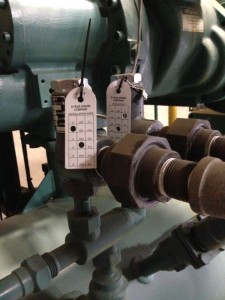Relief Valve Piping System Design Scenario

One often overlooked aspect of a relief valve discharge termination piping system is the scenario that was used at the basis of the piping design. Most designers understand that termination piping must be sized so as to not cause excessive back pressure in the manifold when a relief valve lifts. The question, however, that must be answered is “how many relief valves are expected to discharge simultaneously?” Good engineering practice, requires designers to account for “all relief devices that are expected to discharge simultaneously”. ANSI/IIAR 2-2014 §15.4.4 states that:
The size of the discharge pipe from a pressure relief device or fusible plug shall be no less than the outlet size of the pressure relief device. The minimum size and total equivalent length of common discharge piping downstream from each of two or more relief devices shall be determined based on the sum of the discharge capacities of all relief devices that are expected to discharge simultaneously, with due allowance for the pressure drop in each downstream section.
Since there are a multitude of scenarios that can occur at a facility, we often approach our analysis as follows:
- Machinery Room Fire – In the event that a fire starts in the machinery room, most/all of the machinery room relief valves may lift. Therefore, it is recommended to analyze the termination piping for such a scenario.
- Furthest Distance – The relief valve located furthest from the termination point is often a candidate for excessive back pressure. As such, it is recommended that this relief valve be analyzed.
- Highest Capacity – Similar to the previous item, the relief valve with the largest capacity (scfm or lb/min) can often exceed the back pressure limitations. For this reason, the largest capacity relief valve should always be analyzed.
- All Relief Valves – This scenario where all facility relief valves lift simultaneously is very unlikely, but if this scenario proves ‘compliant’, you can rest assured that all other scenarios will be compliant as well.
Historically, relief valve discharge termination piping has been analyzed using spreadsheet-based analysis. However, most spreadsheets are limited in their ability to analyze varied relief valve scenarios. We have found that the Industrial Refrigeration Consortium’s Safety Relief Vent Tool is an excellent tool for those who desire to:
- Model a relief system (valves and termination piping)
- Analyze compliance for various scenarios
- Document the results of the analysis

Leave a Reply